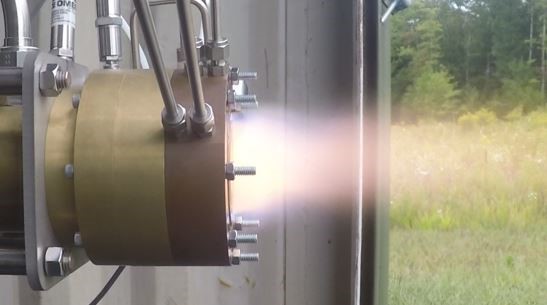Key Features:
- Detonation channel: The combustion chamber of an RDE consists of an annular channel where fuel and oxidizer burn to form a continuously rotating detonation wave.
- Fuel and oxidizer supply: An RDE system requires a steady supply of fuel and oxidizer to sustain the combustion process. The fuel and oxidizer are typically injected into the combustion chamber through ports located in the walls of the annular channel.
- Exhaust nozzle: The exhaust nozzle is where the high-pressure exhaust gases are expelled to generate thrust. The design of the exhaust nozzle is critical for efficiently expanding the exhaust gases to create thrust while minimizing losses due to turbulence or shockwaves.
Benefit to Warfighter/Customer:
Rotating detonation engines offer a combination of high efficiency, reduced complexity, compact size, high power density, and reduced emissions that makes them an attractive option for a variety of applications, from powering spacecraft to improving the efficiency of ground-based engines. These benefits include:
- High efficiency: Rotating detonation engines have the potential to increase efficiency due to a higher instantaneous combustion pressure.
- Reduced complexity: In comparison to pulsed detonation engines, rotating detonation engines offer reduced complexity by eliminating moving parts.
- Compact size: Rotating detonation engines can be designed to be much smaller than traditional engines having the same mass flow rate.
- Reduced emissions: Rotating detonation engines have the potential to reduce emissions by burning fuel more efficiently and completely.


